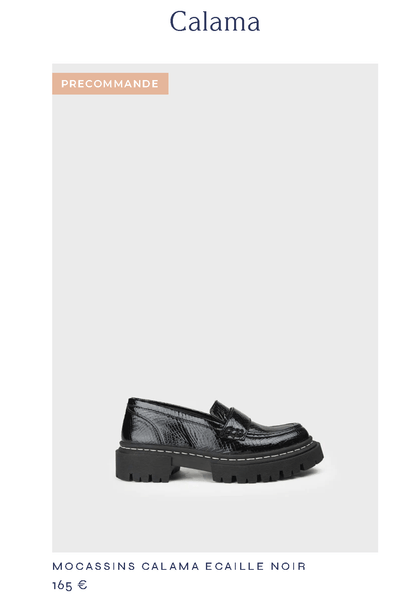Do you want to learn how to properly manage your E Commerce inventory and stockouts? Learn in this article how to add a badge, activate pre-orders, move products to the bottom of the collection or hide them completely from your categories.
This article explains how to do it on the Shopify e-commerce solution but remains valid for any E-commerce CMS.
Why manage your E-commerce disruptions?
If you regularly sell on your e-commerce site, from time to time, products from your store may become unavailable. Having sold out items on your eshop shouldn't be a concern if you learn how to manage it properly.
Often when an item is sold out, many store owners do nothing or just unpost it. There is definitely a better way to handle this. That's why we've put together this article to share some tips on how to handle out-of-stock items.
1) Add a “No more stock” badge
This is already step N°1 to properly manage your e-commerce catalog: add a badge to the products to display directly on the collection pages that the product is out of stock.
This allows your customers to quickly distinguish the availability of your stock. Most Shopify sites and themes use a special HTML class if the item is out of stock, so you can target with custom CSS. This is how we managed to add the simple badges to all of our Shopify agency sites.

If you need help, we can also implement a custom badge on your store via custom CSS code . See our Shopify maintenance services for more details. You can also use one of the "badge" apps. There are many good ones and free ones. At Pikka we are not big fans of “front-end” applications because they can slow down the store and the speed of the store is an important argument for SEO
It is also possible, in addition to or instead of the badge, to “gray out” the products to make them slightly disappear from the catalog and create a rather nice contrast effect.
2) Do not hide products by unpublishing them
Many merchants don't want to display out-of-stock products at all and just want to hide them. Shopify basically offers two ways to hide products. You can either set the product status to draft or unpublish it from the Online Store channel.
On Shopify, you can create products without publishing them to your store. But once published it is also possible to unpublish them. It's a big mistake to do that! This will kill your natural referencing slowly.
Unfortunately, both methods lead to a non-existent page and generate a 404 error. This is a big problem for search engines like Google. Also, if you run ad campaigns on Facebook or Instagram, linking to a non-working URL can potentially lead to account deactivation.
To manage this problem, there are two main solutions:
Do not show out of stock products in your collection
This is a fairly simple solution to set up if you have used automatic collections. Here is an example of a category rule that will allow you to only have in-stock products on your collection and not display out-of-stock products.

Please note, with this solution, out-of-stock products will always appear if we know the URL of their product sheet.
Create 301 redirects once the product is unpublished
If you really want to remove the product from the catalog, you can unpublish it by creating a 301 redirect either to another product or to the category.
For this you can read our article “how to create a 301 redirect in Shopify” to learn more.
3) Use a restocking management app
If it is a temporary product shortage, for example you are waiting for delivery from a supplier, you can use an application to collect emails and notify customers once the product is back in stock.
This avoids purchases throughout the “out of stock” phase and therefore facilitates your management of backorders, since there are none.

At Pikka, we very often use the “Now in Stock at 3$” application, yes the name of the application contains its price. It's an app with a super interesting price/quality ratio that works pretty well and that we can designate.
Inexpensive, effective, efficient and practical. Everything we love about Pikka for our customers.
4) Check your marketing campaigns!
Right now, you have Google and Facebook campaigns that refer to out-of-stock products and 404 pages. Go check that quickly to disable the ads and keywords concerned.
It may sound silly, but you'd be surprised how many merchants pay for clicks that lead to out-of-stock products. You can also keep the campaigns active but remember to make 301 redirects in this case!
Be careful, if you do this, there is still a risk of lower performance of your ads.
5) Offer product alternatives
It is the ideal solution to avoid unpublishing a product while offering your customers the possibility of exploring your catalog.
Instead of disabling the page, you can view a section with similar products or even products from the same collection.
If this is not possible on your theme, we at Pikka can create a custom section for your theme.
It's a bit like a product recommendation section but only appears at the top when the product is out of stock.
It is also possible to hide the price of the old product, see the information of the old product for further conversion.
6) Optimize the merchandising of your collections
The No. 1 idea behind this point, in the event that you still want out-of-stock products to be seen on the site, is to move them to the end of the collection.
Thus, they will appear on the last pages of collections in the pagination and you will have in 1st the products having stock.
Unfortunately, even with automatic collections, there's no way to do this “on its own” in Shopify. We have not yet found a 100% satisfactory app on this point, so we will not make any recommendations.
However, you can go to the categories and sort the products manually by dragging the small icons to move the out-of-stock products to the bottom of the list.
7) Keep selling if out of stock
It is also a solution to manage its out of stock! Continue to sell the product even in negative stock. This is not open to all sectors of activity of course, but if you are producers, if you have a factory for example, then perhaps this is not a problem.
Obviously, if you are a dropshipper or you receive products by ship from China that arrive in 3 weeks, you may want to avoid letting products sell for such a long time without supervision.
In short, this option will strongly depend on your supply chain, it's up to you to see if it's suitable

To enable “out of stock” orders, simply check the “Continue selling if out of stock” box in the “Inventory” section of the product details. This means that customers will be able to purchase the item as usual, even if it is out of stock. If a product has multiple variants, you must edit each inventory variant specifically.
Note that this will still continue to “count” sales. If quantity management is not even your concern then you can disable quantity management.
8) Better plan your stock with ABC management
If you have a Shopify plan other than “Basic” you have a report that can greatly help you optimize inventory management, it's the ABC report.
The idea is very simple but the effectiveness is formidable! classify your products into 3 categories: those which represent the bulk of sales (80%), those which represent 15% of sales and those which represent 5% of sales.

With this table, you will have the list of products to be destocked as a priority. It's up to you to highlight them, make promotions, destocking to make room.
But you will also have the list of products on which a little stock would not hurt.
Used well, this table is a massive weapon for optimizing your stock and managing your working capital needs as closely as possible.
Summary of e-commerce inventory management
As you have seen, there are many ways to better manage inventory and optimize out-of-stock products. managing inventory is one of the fundamental skills of an e-commerce manager . Not dealing with them would certainly be an almost invisible error but which could ultimately cost you dearly and hinder the growth of your e-commerce!
Do not hesitate to contact us at Pikka to optimize your product catalog, automate your processes or give a technical boost to your graphic charter or your theme and boost your conversion rate!

